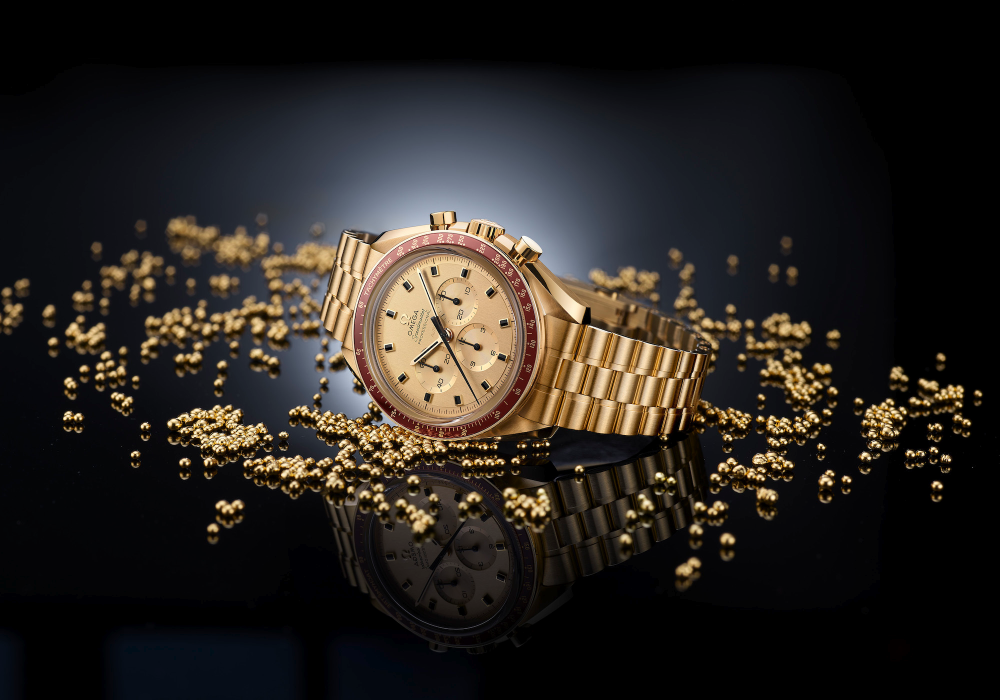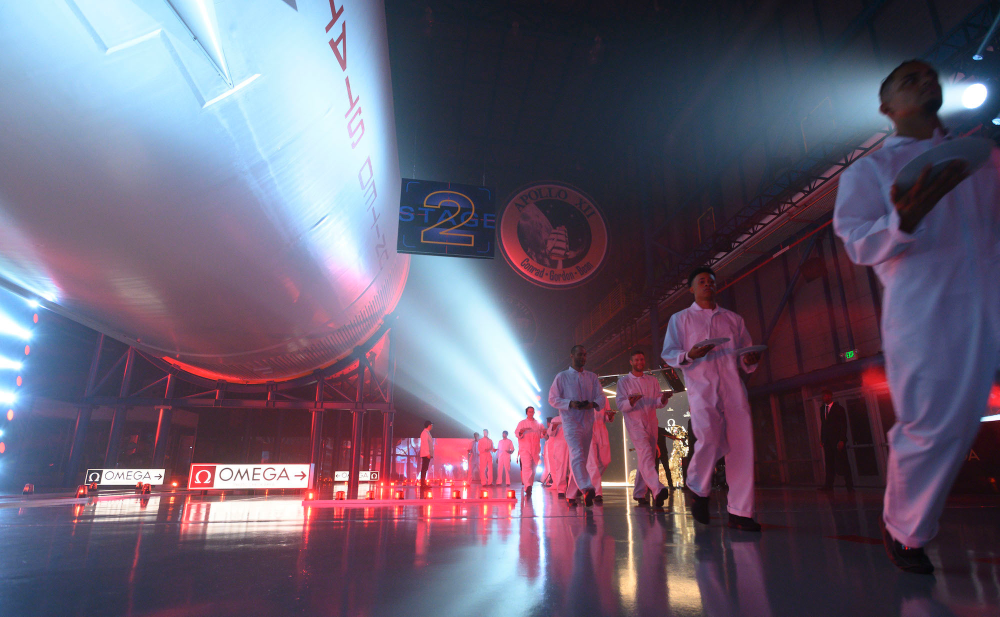In 1969, the Omega Speedmaster became the first watch worn on the moon. Sheena Khemaneydiscovers the wonders of the brand’s limited-edition 50th-anniversary timepiece at NASA’s Kennedy Space Center in Florida
This July marks the 50th anniversary since man first landed on the moon – and the Swiss brand Omega’s Speedmaster was the first ever watch worn on the lunar surface. Indeed, the Speedmaster has a special connection to each and every space industry professional and astronaut, as it serves as a precious reminder of that remarkable Apollo 11 mission in 1969. Omega reached new heights as Neil Armstrong and Buzz Aldrin became the first humans ever to walk on the moon – wearing the brand’s Speedmaster. The timepiece made a name for itself because of its durability, accuracy and easy-to-read design. Since then, Omega has been the sole supplier of watches for NASA’s Human Space Flight programme.

To commemorate the special occasion this year, Omega has released a 42mm Speedmaster in 18K Moonshine gold. Only 1,014 pieces of the Gold Omega Speedmaster Apollo 11 50th Anniversary Limited Edition timepiece are available, referring to the number of special 18K gold Speedmaster watches the brand originally produced from 1969 to 1973 to honour the astronauts in NASA’s space programme.
The new gold alloy for the limited-edition Speedmaster is a slightly lighter hue than the traditional yellow gold. Powered by the new manual-winding Master Chronometer-certified calibre 3861, other distinguishing features include a burgundy bezel ring in ceramic, an outer caseback ring engraved with “1969–2019” and a 42mm case that incorporates the asymmetrical case band of the fourth-generation Speedmaster. The design of the watch also pays homage to a long list of NASA astronauts, including Charlie Duke and Thomas Stafford; actor George Clooney serves as the face of the series.
“I felt more connected and a part of the planet and all the people that were on it than I thought about when I was right down in the middle of it. And that’s what I keep with me. There’s no this side or that side of the planet, it’s all one. ”
NICOLE STOTT, RETIRED NASA ASTRONAUT
After a whirlwind trip with Omega to NASA’s Kennedy Space Center in Cape Canaveral, Florida, though I was approximately 14,000km from Hong Kong, I was technically still at home here on Planet Earth. This revelation dawned upon us all after a fascinating talk with retired NASA astronauts Nicole Stott and Terry Virts about space travel, our identity as human beings and the feeling of belonging. What is the true meaning of identity?How is it formed? What factors contribute to it? In the case of Stott and Virts, it was evident that their several missions to space played a huge, life-changing role in the way they saw themselves in the world, and how their identities formed on a professional, personal and global level.

“I’ve found even if I go just outside my neighbourhood, exploring somewhere different – on the top of the mountain, in an airplane looking out the window, on the ocean or just getting out of what’s comfortable – you don’t get a totally new perspective on it,” says Stott. “Space is an excellent example of this. You feel more separated from Earth than you’ve ever been and that I’ll ever be again. But at the same time I felt more connected and a part of the planet and all the people that were on it than I thought about when I was right down in the middle of it. And that’s what I keep with me. There’s no this side or that side of the planet, it’s all one. The one thing we share in common is that on this planet, we’re all in space. People say they want to go to space… dude, you’re in space!”
Similarly, Virts says, “When I was kid, I did an exchange in Finland. I lived in France and, in the military, I travelled all around the world. It was always, ‘Okay, I’m in France; I’m in Korea; I’m back in America.’ We’d land and I’d think, ‘Alright, I’m home.’ But one time when I returned, I felt I’d never left home. If I land in a different country now, I still feel like I’m home – I’m not somewhere else.”
Story by Sheena Khemaney
Photos/ Omega





